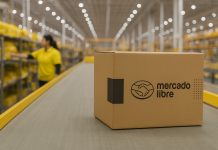The popularity of digital wearables like the Apple Watch, Fitbit, and smart rings has increased since 2021. They represent the trendy side of preventative healthcare.
We examined this in “Connected Wellness: What’s Next In The Connected Economy,” a paper based on research funded by CareCredit. We conducted a study of more than 3,200 U.S. consumers to learn about their use of digital technology in order to prevent health issues.
The popularity of digital wearables like the Apple Watch, Fitbit, and smart rings has increased since 2021. They represent the trendy side of preventative healthcare.
We investigated this in “Connected Wellness: What’s Next In The Connected Economy,” a paper with research supported by CareCredit. We conducted a survey of more than 3,200 US consumers to learn about their efforts to avoid health issues, with a focus on the use of digital technology.
We found that 10 million additional Americans began using websites and wearables just nine months before August 2022, which led us to the conclusion that 148 million Americans, or over 44% of the entire U.S. population, are currently utilizing some kind of preventative digital healthcare technology.
The research notes that 31% of consumers reported utilizing websites or apps to assist their mental health in August, “up 32% from November 2021,” with COVID-19 probably definitely playing a role in the somewhat abrupt increase in healthcare wearables and web tools. This is by far the activity connected to preventative health that has had the biggest rise.
Though 75% of customers who are most connected say they used at least one in August, it’s interesting to see that they utilize mental healthcare apps the least. Compare that to November 2021, when just 45% of integrated tech customers used mental health-related applications while 75% of them wore wearables.
According to the report, “this demonstrates the widespread and quickly growing demand among integrated tech customers for various preventative healthcare devices.”












